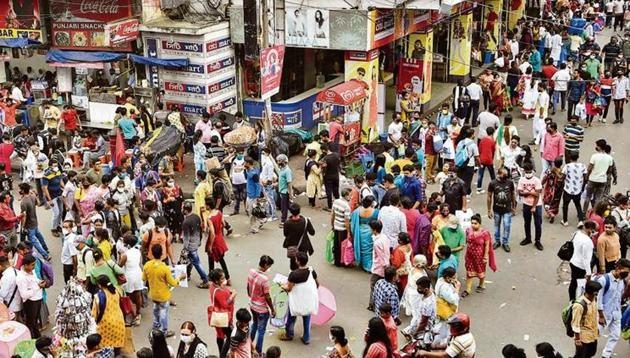Covid-19: What you need to know today
Amid a lot of spin about what has worked for India and what hasn’t, and whether or not the government has done a good job in tackling the coronavirus disease (Covid-19), two things stand out.
So, after eight months of the pandemic’s run in India, it is now down to good sense.

Amid a lot of spin about what has worked for India and what hasn’t, and whether or not the government has done a good job in tackling the coronavirus disease (Covid-19), two things stand out.
One, we now know how to keep the viral disease at bay. I don’t mean that in jest. We really do. I remember telling a very senior functionary in the government this in mid-August — that if everyone in India wore masks when they were out and about (not just when they thought someone was watching, but even otherwise), the number of cases would fall to a tenth in about four weeks. I meant it directionally, of course — the four could have become five and the tenth could have become an eighth — but I still believe this.
Also Read: Donald Trump says ‘seems like I’m immune’ from Covid-19
Two, we now know how to save the lives of those infected by the disease. Every passing day increases our knowledge about what works and what doesn’t, and our ability to cure even people with severe infection.
Both are universal truths. They apply to every country on the planet — from China, whose numbers remain a mystery , to New Zealand, which has successfully crushed the virus for the second time (a feat that is expected to play no small part in what political analysts in that country see as a landslide win for Jacinda Ardern in the coming national election), to the US, which now has as many alternate facts about Covid-19 as it does about anything else, and whose President Donald Trump, facing an election in November, is the most prominent world leader to have contracted the disease.
Click here for complete coverage of the Covid-19 pandemic
These things matter because India is really opening up.
Even the health minister of Maharashtra, the state worst affected by the pandemic — 40,040 deaths and 1.5 million cases out of India’s total of 108,374 deaths and 7.05 million cases till Saturday night — believes that everything in the state, including schools, will be open in some form by the end of November. “Schools are expected to open after Deepavali; railway services are being allowed this month; religious places and gymnasiums too, will be allowed to open in a phased manner. Some activities will be allowed by October-end and the remaining by November-end,” Rajesh Tope said on Saturday. “I think, by November-end, everything will be open,” he added, for good measure.
The pan-India easing of restrictions on movement and activities comes ahead of the festive season, and with the beginning of the next cycle of elections in India — the Bihar assembly elections and by-elections in 11 states will be held shortly. In the first half of next year, Assam, Kerala, Puducherry, Tamil Nadu, and West Bengal will all go to the polls.
And in the first half of 2022, Goa, Manipur, Uttarakhand, Punjab, and Uttar Pradesh will go to the polls. A Covid-19 vaccine will definitely be available by then, although it is unlikely that everyone in India would have got a shot.
Put otherwise, it’s going to be business as usual — except, it won’t be. And things can’t be left to chance, or the belief (which has usually proved erroneous) that people will always end up doing what is best for them.
Which is why it’s important that the Union health ministry and state (and Union Territory) health departments, and the Indian Council of Medical Research do what needs to be done.
Also Read: India considers using more than one Covid-19 vaccine
On the testing front, they need to mandate the use of accurate rapid tests, even pushing for their use by occasion — ahead of events, for instance, or maybe even ahead of flights — or time (a weekly testing regimen for teachers and students once schools open physically).
On the tracking front, they need to keep a close eye on numbers — at the neighbourhood level in cities, and at the village level elsewhere — and define containment zones at the first hint of trouble.
And on the treatment front, especially with the onset of winter and other strains of flu (especially in central India and the northern plains), they need to ensure that hospitals are geared for an increase in the number of patients (perhaps even an increase in the number of those requiring critical care).
It’s not over so there is simply nothing to be gained by pretending it is.






